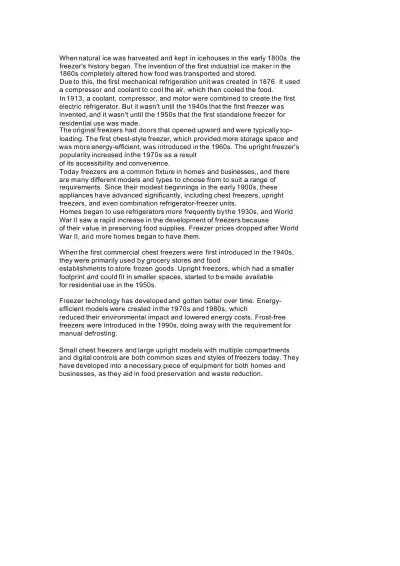Page 1

Loading page ...
Explore the evolution of freezers from 1800s ice harvesting to modern energy-efficient models, highlighting key inventions like the electric refrigerator, chest and upright freezers, and frost-free technology shaping food preservation today.

Loading page ...